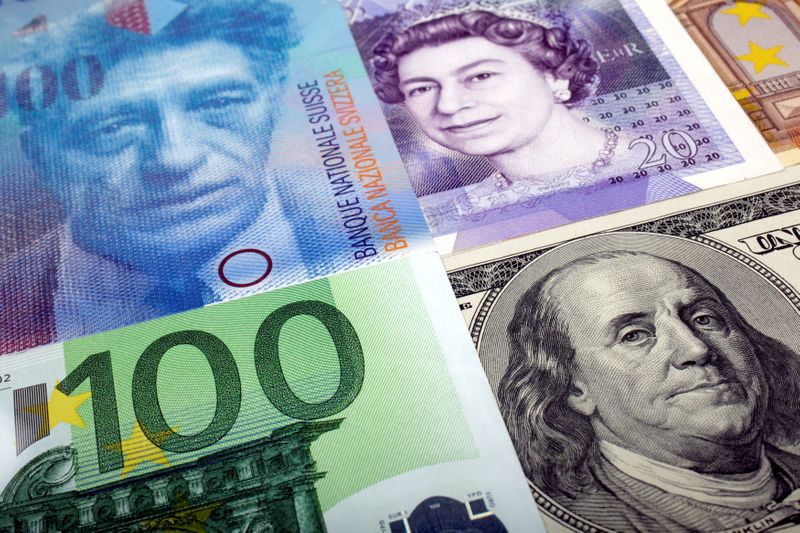
© Reuters. FILE PHOTO: A picture illustration of U.S. dollar, Swiss Franc, British pound and Euro bank notes, taken in Warsaw January 26, 2011. REUTERS/Kacper Pempel/File Photo
By Saikat Chatterjee and Tom Westbrook
LONDON (Reuters) – The dollar slid against its rivals and the yen headed back towards more than two-week highs on Tuesday after Moderna (NASDAQ:)’s CEO said COVID-19 vaccines are unlikely to be as effective against the Omicron variant as they have been with other types.
Risk appetite took a beating across world markets with the greenback weakening 0.3% versus its rivals while the Japanese yen climbed 0.4% versus the dollar to its highest levels since early November at 112.95 yen.
“Market participants’ fears over a more disruptive outcome for the global economy have been reinforced overnight by comments from Moderna Inc. CEO,” Mizuho strategists said in client note.
U.S. Treasury yields fell 6 bps to their lowest levels in two weeks, yanking the greenback lower as markets took the view that a prolonged fight with the virus would undermine expectations of how quickly the Fed will raise interest rates in 2022. [US/]
In a sign that European markets are set for a choppy session, the Swiss franc rose to a two-week high versus the U.S. dollar while it held within a striking distance of a July 2015 low against the euro.
“There is no world, I think, where (the effectiveness) is the same level . . . we had with Delta,” Moderna Chief Executive Stéphane Bancel told the Financial Times in an interview.
The Australian dollar slid 0.65% to a new 12-month month low of $0.7093, and the New Zealand dollar lost 0.6% to $0.6783 after the interview was published, heading for its worst month since May 2015.
A bounce in the euro currency looked set to run out of steam before the latest data on euro area consumer prices for November. The single currency slumped to a nearly 17-month trough of $1.11864 last week as ECB policy makers stuck to their dovish stance in the face of heated inflation.
Prior to Omicron’s arrival, the main driver of currency moves was how traders perceived the different speeds at which global central banks would end pandemic era stimulus and raise interest rates as they looked to combat rising inflation without choking off growth.
Fusion Media or anyone involved with Fusion Media will not accept any liability for loss or damage as a result of reliance on the information including data, quotes, charts and buy/sell signals contained within this website. Please be fully informed regarding the risks and costs associated with trading the financial markets, it is one of the riskiest investment forms possible.

